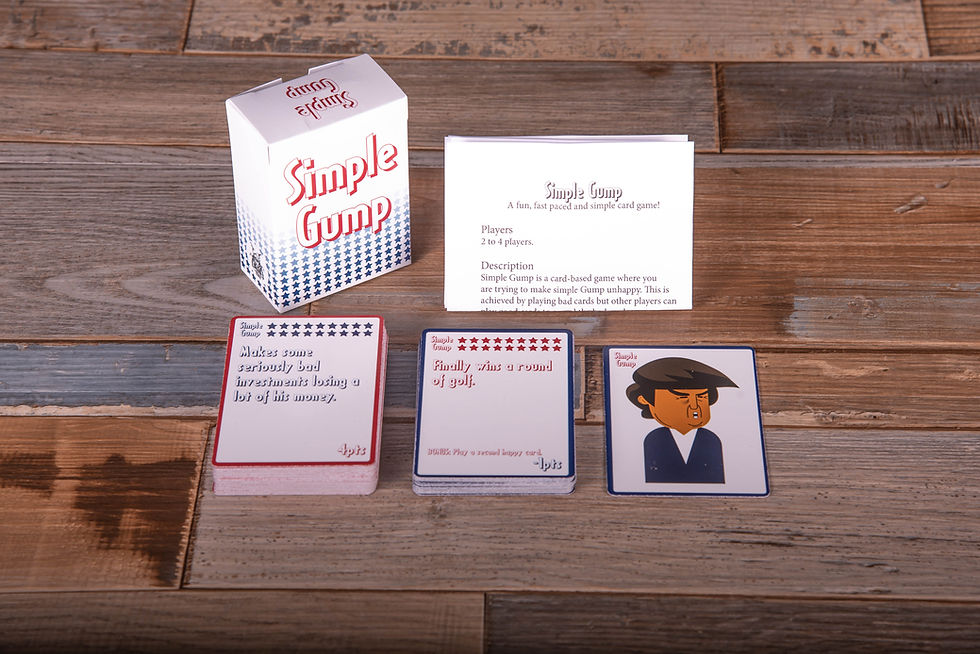Designing and what I have learnt (the hard way)
- samuraigamesuk

- Jun 16, 2020
- 3 min read

Above is one of the versions that I do not even count as a prototype for Simple Gump, to me that is just a version I was playing with that I never considered and ended up getting archived away. I am not an illustrator or a graphic designer, my degree was in 3D animation and illustration but I focused on 3D design. Designing a game was a learning curve for me and using illustrator a program I have used in the past was a bonus. If you have never used a program like illustrator before it is powerful and easy to use but it does take a lot of time and effort to master and I am far from that level! Simple Gump is mainly a text based card game and did not require a lot of illustrations thankfully. I am now rambling on and just want to share with you some tips I learnt from designing the game.
1: Name the layers! For the love of god name the layers it will save you from looking at the layers later on looking for a certain one and wishing you had named them from the start.
2: Name the groups! Just like above name the groups it makes everything easier in the long run! 3: Save often, I had a powercut during a design session and lost about 30 minutes of work, it is not a lot of time but it is 30 minutes I would rather not waste.
4: Put in the cut and safe to print zones for the design, The first design I made I did not get these measurements from the printing company and all my designs were next to useless and had to redo them all.
5: Get feedback from people often on the design and find out what is working and what they think needs to be changed.
6: Use CMYK not RGB, most printing companies will use CMYK and if all the designs are in RGB the colours will look different when printed.
7: Create a product sheet that contains all the information about the design, the card size, the card type, the CMYK colours and so on. The more information you put on this sheet the easier it will be for the printing company to see what you want and how you want it.
8: Look at other peoples art work and see what you like and do not like and then use that to fuel your own designs. I am not saying company some ones work but be inspired by it.
9: Pay a professional if it is beyond your skills, if you want a game for you and your friends or family to play at the end of the day it does not matter what it looks like. If the game is something you want to publish then it needs to look professional. Simple Gump does not really need a lot of graphic design or illustrations because of the idea behind the design. Now with other games I will hopefully be working on in the future I will need to hire a professional because I know I do not have the skills needed for the art work. Be realistic with what you can do yourself and what you will need help with. I really hope this information helps people and you avoid some of the mistakes I made when starting the project.








Comments